Our History
1981
- Jan. 12
- “For the People, By the People: Recommendations on the Cultural Administration of the City of Yokohama” report is submitted by the City of Yokohama Cultural Issues Group.
- Oct. 26
- Museum of Art Basic Concepts Committee is established.
1982
- Mar. 18
- Museum of Art Basic Concepts Committee presents its findings in the report “About the Basic Concept of Yokohama City Art Museum.”
- Sept. 20
- The Yokohama City Museum of Art’s Research Committee on Architectural Design is established.
1983
- Apr. 9
- Museum of Art’s Design Conditions Study Group findings are enumerated.
- Apr. 20
- Architectural design of the Museum of Art is entrusted to Kenzo Tange + Urtec.
Childrens’ Workshop Study Group (1983–1988) is launched.
The collection of businessman Sakata Takeo, founder of Sakata Seed Corporation, centered on works from the Barbizon school, is donated, and the acquisition of Nagaoka Contemporary Art Museum former Taiko Collection is completed.
1984
- Jan. 27
- Yokohama Museum of Art Cooperation is established.
Exhibitions showcasing the museum’s progress in expanding its collection are held at the Yokohama Civic Art Gallery and other locations.
1986
Citizens’ Workshop Research Group activities begin (active through 1990).
1987
- Oct. 1
- Yokohama Art Foundation is established as the governing body of the institution.
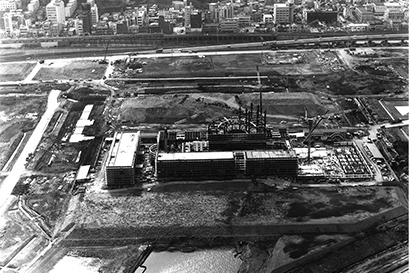
1988
- Mar. 31
- Construction of the museum is completed.
- Sept.
- Yokohama City Council ratifies “Yokohama Museum of Art” as the official name of the institution.
- Sept. 24
- The Yokohama Museum of Art Ordinance is issued.
1989
- Feb. 28
- External construction is completed.
- Mar. 25
- The museum opens initially as a pavilion at the Yokohama Exotic Showcase (YES ’89). Exhibition commemorating the inauguration opens.
- Nov. 3
- Yokohama Museum of Art Ordinance is carried into effect and the facilities officially open to the public.
Art critic Kawakita Michiaki is appointed the first Director of the museum.
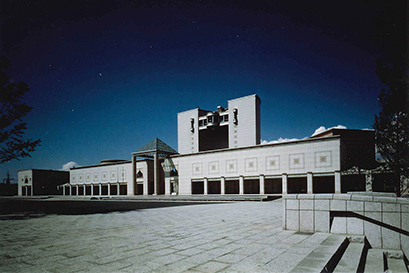
Photo: ©Osamu Murai
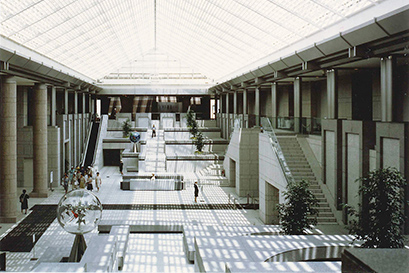
Photo: ©Osamu Murai
Children’s Workshop and Citizens’ Workshop programs are launched.
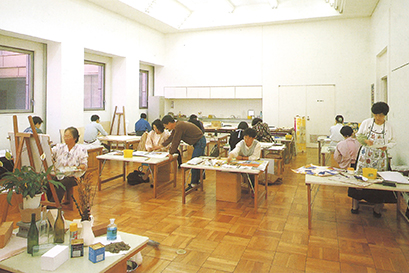
Art Information and Media Center (Art Library and Art Information Gallery) open.
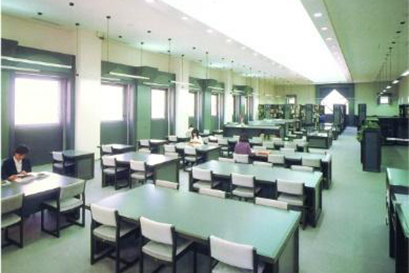
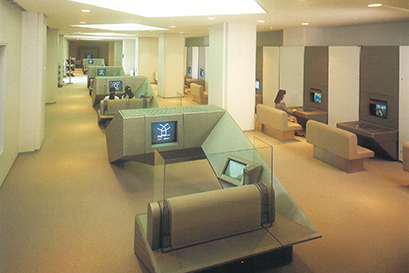
The museum’s mini music concerts including “YMA Classic Live” are launched in the Grand Gallery.
1990
Kaburaki Kiyokata becomes the museum’s first independently planned and organized exhibition.
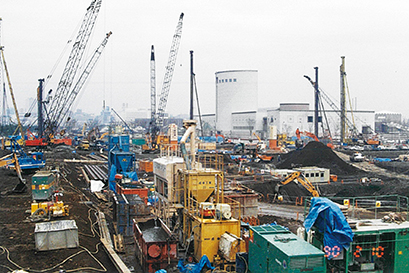
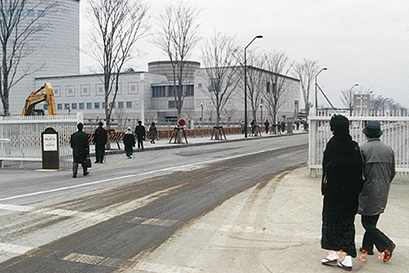
Experimental film screenings are hosted by the Art Information and Media Center.
1991
First issue of the Yokohama Museum of Art newsletter “RGB” is published (final issue in 2005).
1992
- Jun. 28–30
- The International Symposium on Art Museum Education 1992 is convened.
- Jul.
- Art critic Tsuruta Heihachiro is appointed as Director, becoming the second to fulfill that role in the museum’s history.
Inaugural lecture on art history is hosted by the Art Information and Media Center (lecture series continues intermittently until 2001).
1993
- Jul.
- Art historian Kagesato Tetsuro is appointed as the museum’s third ever Director.
1994
“Japanese Art after 1945: Scream against the Sky” exhibition is guest-curated by Alexandra Munroe.
1995
First volume of “Yokohama Museum of Art Library” [Yokohama Bijutsukan Sosho] imprint is published (eighth and final volume published in 2003).
1996
With support from the Information-Technology Promotion Agency, Japan, a server is built and the museum’s website comes online.
1998
“Bulletin of Yokohama Museum of Art” [Yokohama Bijutsukan Kiyo] No.1 is published.
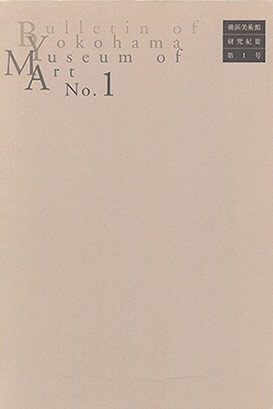
1999
Art Information Gallery is renovated.
2002
- Apr.
- Yokohama Art Foundation merges with the Yokohama Culture Foundation, forming the Yokohama Arts Foundation.
Art historian Yukiyama Koji is appointed as the museum’s fourth Director.
2004
City of Yokohama “Creative City” policy is launched.
Minatomirai Station opens.
2005
- Apr.
- Art Information and Media Center is renovated.
Louvre Museum exhibition is attended by a record 600,000-plus visitors.
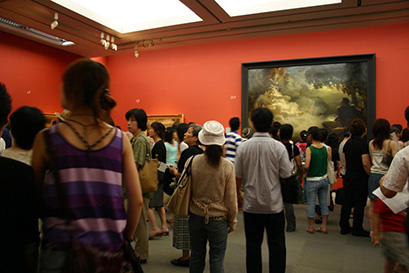
Artist in Museum Yokohama (AIMY) residency program (2005–2009) is launched.
The museum launches its official blog.
2006
- Apr.
- Yokohama Arts Foundation is appointed administrator of the museum, after the launch of the designated administrator system.
“Endo Matazaemon and His Retainers” (1854), a daguerreotype by Eliphalet BROWN Jr., is named an Important Cultural Property.
2007
- Aug. 20
- Record attendance at the Children’s Workshop Free Zone for Children and Parents.
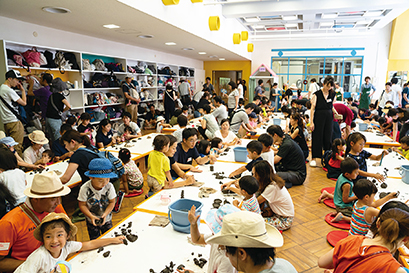
Photo: KATO Ken
First New Artist Picks (NAP), a series of small exhibitions for upcoming artists, is held.
- Sept.
- Yokohama Museum of Art launches its email newsletter “Web Special.”
2008
- Apr.
- Joint venture consisting of the Yokohama Arts Foundation, Sotetsu Agency (later renamed), and Mitsubishi Estate Building Management (later renamed) becomes the designated museum administrator.
Heart to Art, a corporate sponsorship program, commences in earnest.
Tuition-based education program Yokohama Museum of Art Juku (2008–2012) is launched.
2009
Yokohama Arts Foundation is chartered as a public interest incorporated foundation.
- Apr.
- Curator Osaka Eriko is appointed as the museum’s fifth Director.
2010
- Jun. 14–Mar. 15, 2011
- Fully fledged inclusion programs are launched.
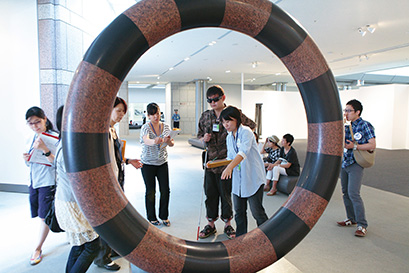
Yokohama Museum of Art Collection Friends program is launched for individuals to support the museum collections.
2011
- Mar. 11
- Great East Japan Earthquake occurs.
The opening of the Pushkin Museum Exhibition (initially scheduled for April) is postponed, and the Hasegawa Kiyoshi Exhibition is organized ad hoc from the museum’s collection.
Having transferred from Japan Foundation to the stewardship of Yokohama City, the Yokohama Triennale, an international exhibition of contemporary art launched in 2001, holds its fourth iteration, with Yokohama Museum of Art serving for the first time as one of the main venues.
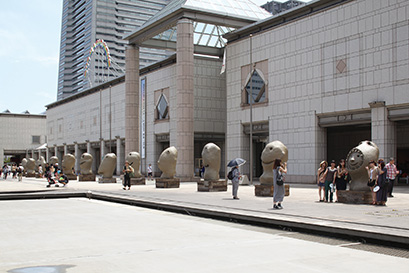
"moonrise. east," 2005
Installation view of Yokohama Triennale 2011
Courtesy the artist and Galerie Eva Presenhuber, Zürich
©the artist
Photo: KIOKU Keizo
2012
- Apr. 1
- Education Project is launched to promote art appreciation programs.
- Apr.
- Yokohama Museum of Art launches its official Twitter account.
2013
- Apr.
- Yokohama Arts Foundation is reappointed administrator of the museum.
Community outreach at hospitals and other offsite healthcare providers begins in earnest.
A large-scale commercial complex opens on the other side of the park in front of the museum.
2014
Kids Art Guide Program is launched. Volunteer talk program is expanded.
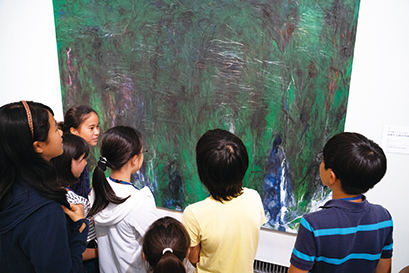
Photo: KATO Ken
The museum’s first exhibition of its film and video collection to be held abroad takes place at the Singapore Art Museum annex SAM at 8Q in exchange for the 2013 exhibition “Welcome to the Jungle: Contemporary Art in Southeast Asia from the Collection of Singapore Art Museum.”
2015
- Jun.
- Yokohama Museum of Art launches its official YouTube channel and Facebook account.
Yokohama Museum of Art is presented with the Minister’s Award for Regional Art-Activities in Japan 2015.
Senior and youth outreach programs are launched.
2016
Partnerships with local schools are bolstered through a collection-based approach to art appreciation.
2018
An exhibition featuring the museum collection is held for the first time in Japan at the Museum of Art, Kochi, and Arts Maebashi.
2019
The museum’s first exhibition of its photography collection is held outside Japan at the National Gallery of Canada.
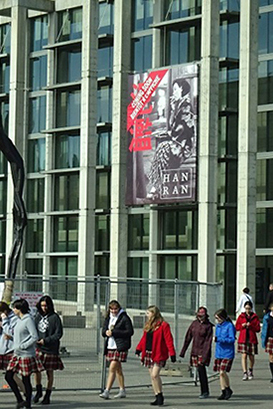
Special programs commemorating the museum’s 30th anniversary are held.
2020
- Feb.
- As a prevention measure against the spread of the Coronavirus, all museum facilities close starting February 29, and although the Sumikawa Kiichi Exhibition and the Yokohama Museum of Art Exhibition open successfully on February 15, they both are concluded before the museum is able to reopen.
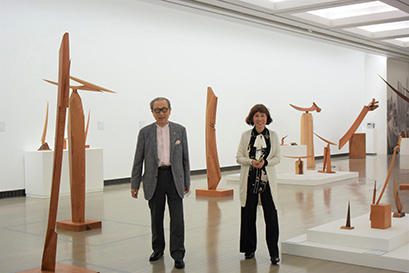
- Apr.
- Curator Kuraya Mika is appointed as the sixth Director of the museum.
- Jul.
- Despite the ongoing situation with coronavirus, which prevents artistic directors and artists from abroad from entering Japan, the Yokohama Triennale 2020 is held.
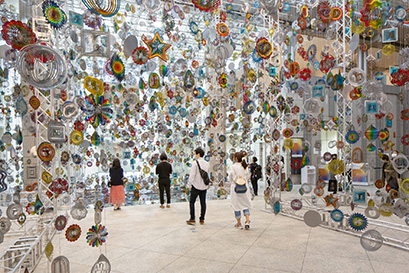
"Kinetic Spinner Forest," 2016 (recreated in 2020)
©Nick Cave
Installation view of Yokohama Triennale 2020
Photo: OTSUKA Keita
- Sept.
- Children’s Workshop and Citizens’ Workshop make a partial return.
2021
From March 1, the museum closes for its first ever major renovation.
Collections of 13,000 works of art and 230,000 books are removed and transferred to external warehouse facilities.
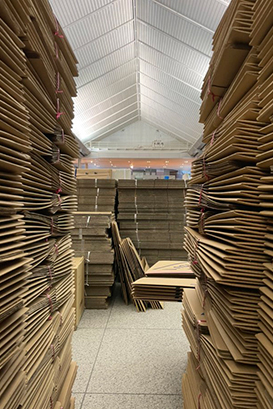
- Sept.
- A series of lectures and educational events called “Demae” is launched at cultural institutions around the 18 wards of Yokohama City.
- Oct.
- The “Yadokari” Program kicks off at the Temporary Office at PLOT 48, holding workshops and other activities.
Yokohama Museum of Art launches its official “note” account to feature casual articles, reflections, and updates on museum activities.
2022
- Feb.
- Making use of the temporary Construction Wall, the “New Artist Picks: Wall Project” is initiated.
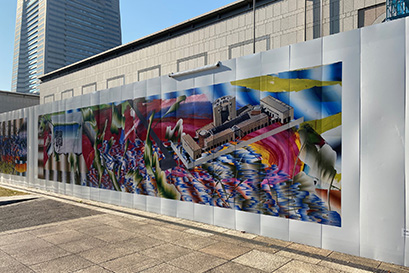
- Apr.
- “Exhibition of Artists of the Japan Art Institute from the Collection of Yokohama Museum of Art” opens at the Koriyama City Museum of Art.
2023
- Apr.
- Third administrative period begins.
- Nov.
- Renovation of the museum is completed.
2024
- Mar. 15
- The museum reopens.
The 8th Yokohama Triennale begins.
- Jun. 9
- The 8th Yokohama Triennale ends.
The museum closes to bring home the nearly 14,000 works in its collection from the storehouse where they were temporarily stored.
- Nov. 1
- Partial Opening of “Jiyu Area”: Galleries 8 & 9, Art Library, Museum Shop & Cafe
Citizens’ Workshop and Children‘s Workshop: Programs recommence
2025
- Feb. 8
- Grand Opening
The Reopening Inaugural Exhibition, “Welcome back, Yokohama,” begins.









